Genre: Puzzle Developer: Namco Publisher: Namco Players: 1-2 Released: 1993
When a developer decides to create a game about crabs grabbing each other’s balls, if there is one thing that is required, that would be a more dignified and less perverted sounding back story to justify the premise. After all, even the simplest of games find a way to have some kind of plot as a basis for the action, from Super Breakout‘s shuttle mission to planet Ieris to investigate its mysterious force field by smashing it to pieces, to Stevedore’s goals of pushing enough boxes to earn enough cash to buy himself a sports car to attract women in Shove It! The Warehouse Game. Apparently, in the future presented in Ball Jacks, there is a contest where “two men scrambled balls riding robots” to compete for “colossal wealth and honorable title.” Perversion and Engrish aside, it’s a fair summation of the game.
Developed by a staff of six people, Ball Jacks is a simple two-player competitive game where each player controls one vertically-moving horizontally-facing robot crab. Each crab has two balls which roll around a conveyor belt behind them (the balls rotate around the belt, so they’re not always accessible). The goal of the game is to use your crab’s claws to capture your opponent’s balls while defending your own. (Oddly enough, the cover art depicts a female pilot. Make of that what you will.) Once one player has all four balls in his possession, the castrated opponent’s timer begins to tick down until he is able to wrestle a ball back. If no one wins by this method, whoever has the most balls at the end of each three minute round wins. If there is a tie, the game resumes, and the first person who can hold three balls wins, not just the game but at life.
The game mechanics are fairly interesting as the balls are not just the means to win, but they also act as weapons of sorts. When an opponent grabs your balls and strikes you with them from behind, your crab takes damage. Each claw is controlled individually with the A or B button, and you can have one claw pulling in a ball while using the other to strike one being grabbed by your opponent, sending it back to your conveyor belt. It can be difficult to move around while the enemy is making a play for your balls, since a successful grab can damage you on the way to the other side of the field. At the extremes of the vertical track are little holes where your crab can duck in and find temporary sanctuary from “attacks,” but this also precludes you from capturing balls yourself.
After a handful of strikes, your wrecked crab will be unable to send its claws out, its scuttling speed also reduced. A damaged crab must return to the pit at the center, where after three seconds or so it’ll be repaired. Your opponent will surely take advantage of this, and destroying your enemy often provides just what is needed to grab all the balls for yourself. It is particularly unfair that in the single player mode, a number of your opponents are flat out invincible, though they tend to have a smaller timer limit to compensate for that advantage. Also, your opponents will sway their robotic claws every which way over the field to retrieve and protect captured balls, something not so easily done by the human player.
The single player mode features a world championship match where you battle six computer opponents. Beat them all, then you’re off via provided code to battle another six crabs in the galaxy championship on board space station G.L.O.R.I.A. By the time you get to this extra mode, you will have undoubtedly tired of the game and not looking for more of the same. The game does prove to be some semi-mindless fun with its two-player mode, but with no variety of machines, fields, or ball types available, there really isn’t much longevity to Ball Jack‘s versus mode as well.
It’s a shame, too, because the game takes an original idea and does decent enough job of putting it on the screen, especially given the short staff. The graphics are large and detailed, and everything is animated well. The simple physics of the balls and crabs are nice as well; they react to collisions as they should, and both the balls and crabs feel as heavy as you would expect. Crab explosions are nicely done, and there’s something to be said about maintaining such a large number of moving, animated sprites with no flicker or slowdown while everything fits in the confines of a single screen game. A nice variety of crab and ball types are presented in the single player mode as well, but ultimately it doesn’t make a difference since that is not where most players will be looking to spend their time.
While I’d imagine that giant balls getting battered around by futuristic mechanic crabs would sound at least something like the clangs and whacks of Ball Jacks, the music is completely forgettable and makes the game sound as stale as it gets. The Vegas lounge music soundtrack reminds me of Stack Columns and seems oddly appropriate for Ball Jacks given the cheap thrill it provides.
Thankfully, nowadays the game can be had rather cheaply, and if you have friends willing to play the game with you, then it could be an inexpensive ticket to an hour’s worth of entertainment. Otherwise, while I can commend the game on its unique premise, there just isn’t enough to it to make Ball Jacks a recommended title or a long lasting one.
SCORE: 3 out of 10.

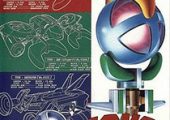
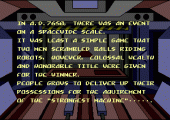
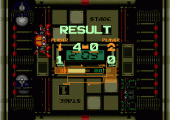
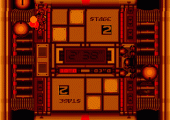
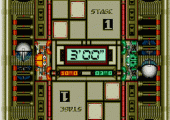
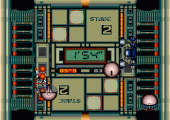

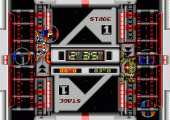
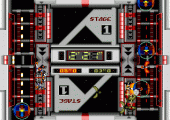
Simple but not as bad as some say. Can be slightly addicting at times. I’d give it 5/10.